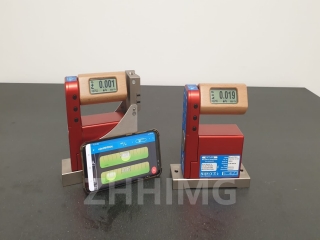In high-speed laser equipment used for manufacturing chips and precision parts, a seemingly ordinary granite base is actually the key to avoiding hidden problems. Which invisible "precision killers" can it actually solve? Today, let's take a look together.
I. Repel the "Ghost of Shaking" : Say goodbye to Vibration interference
During high-speed laser cutting, the laser head moves hundreds of times per second. Even the slightest vibration can make the cutting edge rough. The steel base is like an "enlarged audio system", amplifying the vibrations caused by the operation of the equipment and the passing of external vehicles. The density of the granite base is as high as 3100kg/m³, and its internal structure is as dense as "reinforced concrete", capable of absorbing over 90% of the vibration energy. A certain optoelectronic enterprise's actual measurement found that after switching to a granite base, the edge roughness of the cut silicon wafers dropped from Ra1.2μm to 0.5μm, with the precision improved by more than 50%.

Second, resist the "thermal deformation trap" : Temperature no longer causes trouble
During laser processing, the heat generated by the equipment can cause the base to expand and deform. The coefficient of thermal expansion of common metal materials is twice that of granite. When the temperature rises by 10℃, the metal base may deform by 12μm, which is equivalent to 1/5 of the diameter of a human hair! Granite has an extremely low coefficient of thermal expansion. Even if it works for a long time, the deformation can be controlled within 5μm. This is like putting on a "constant temperature armor" for the equipment to ensure that the laser focus is always accurate and error-free.
Iii. Avoiding the "wear Crisis" : Extending the service life of equipment
The high-speed moving laser head frequently comes into contact with the machine base, and inferior materials will be worn through like sandpaper. Granite has a hardness of 6 to 7 on the Mohs scale and is even more wear-resistant than steel. After normal use for 10 years, the surface wear is less than 1μm. In contrast, some metal bases need to be replaced every 2 to 3 years. Statistics from a certain semiconductor factory show that after using granite machine bases, the equipment maintenance cost has decreased by 300,000 yuan annually.
Fourth, Eliminate "installation risks" : Precise one-step completion
The processing accuracy of traditional machine bases is limited, and the error of installation hole positions may reach ±0.02mm, resulting in the equipment components not matching properly. The ZHHIMG® granite base is processed by five-axis CNC, with a hole position accuracy of ±0.01mm. Combined with CAD/CAM prefabrication design, it fits perfectly like building with Lego during installation. A certain research institution has reported that the equipment debugging time has been shortened from 3 days to 8 hours after its use.
Post time: Jun-19-2025

